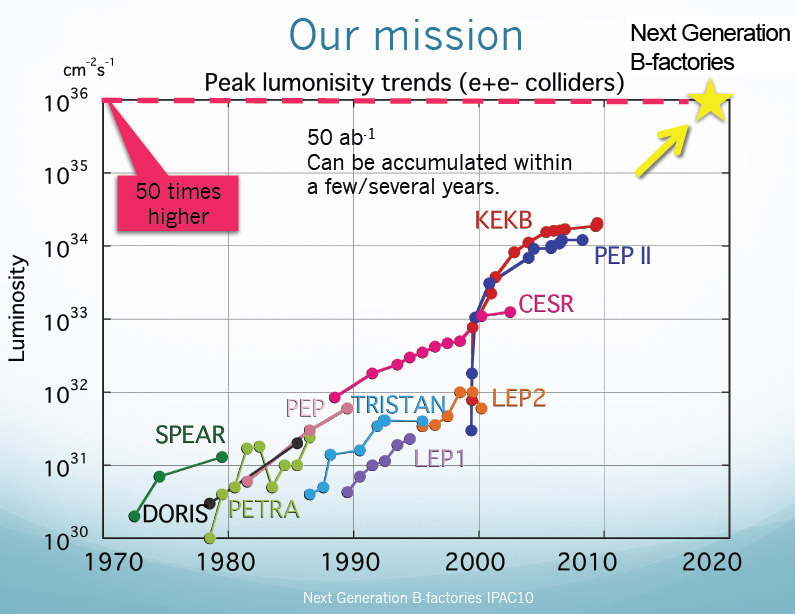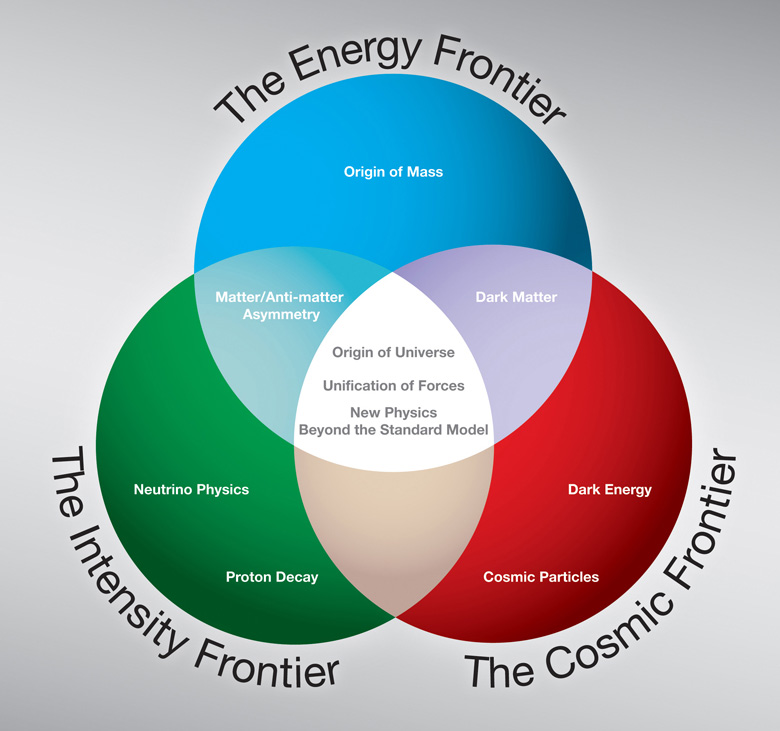Director's Corner
15 July 2010
 Barry Barish |
Japan to provide funds towards the Super KEKB upgrade
High-energy physics got a substantial boost last month when MEXT (Ministry of Education, Culture, Sports, Science and Technology), the Japanese ministry that supports high-energy physics at KEK, announced that it will appropriate 10 billion yen (around 110 million dollars) towards the upgrade of KEKB over the three years starting this fiscal year. This new investment is welcome news, as it both will further an especially productive research area (B physics) and more generally the 'intensity' frontier. Recent strategic plans for the future of particle physics have emphasised the importance of a multi-prong approach, with the main areas being the energy frontier with the LHC and hopefully a future linear collider, as well as the intensity frontier with one element being a SuperB factory, and emerging cross-disciplinary probes in experimental particle astrophysics, called the cosmic frontier.
There are two initiatives to develop a new-generation B-factory, one being an upgrade to KEKB in Japan and the other an innovative accelerator optimised to produce very high luminosity in Italy. The goal of these machines is to increase the luminosity for B physics by about a factor of 40 (Japan) and 50 (Italy) over the present achieved highest luminosity at KEKB. The Italian government is expected to make a decision regarding their SuperB machine within the next few months, while the initial funding for the upgrade of Japanese KEKB has just been announced. Today, I will briefly describe the Japanese initiative.
The present-generation machines, KEKB and PEP-II at SLAC, have achieved comparable luminosities in different ways. Together, they have accumulated much experience for the key technologies that will be needed in a very high-current machine, giving confidence in the reality of making the next step. A key step at KEKB was that they have gained experience operating with finite crossing angles (22 milliradian) and crab cavities that effectively create head-on collisions.
The strategy to develop a significant increase in luminosity in an upgrade of KEKB will be first to reuse as much as possible of KEKB (e.g. the tunnel and many of the technical components). The machine design will be based on the "nano-beam" scheme developed first by P. Raimondi at Frascati for the Italian SuperB machine. The basic idea is to make collisions with low-emittance optics yielding much reduced beam spot sizes, rather than the alternate approach of emphasising a significantly increased beam current. The nano-beam scheme will have significantly lower power consumption, reducing running costs. However, to achieve low-emittance the one hundred 0.9-metre-long magnets in the arcs will be replaced with 4-metre-long magnets; a new positron source and low-emittance damping ring will be built, and new interaction region optics, using new superconducting and permanent magnets will be needed.
 The integrated luminosity to date for B physics and the projected goals for the next-generation B-factories Image: Mika Masuzawa at IPAC10 The integrated luminosity to date for B physics and the projected goals for the next-generation B-factories Image: Mika Masuzawa at IPAC10 |
What will be the science once this big step in luminosity is accomplished? The measurements already carried out at PEP-II and KEKB have been very impressive, first verifying the theoretical predictions of Makoto Kobayashi and Toshihide Maskawa for which they were awarded the Nobel Prize in 2008. In addition, with the integrated luminosity – a measure of the rate of collisions – of 1.5 attobarn-1 as the total of two machines, the so-called Unitarity Triangle (predicted in the Standard Model) has been verified to about 10% accuracy and many decay modes and quantities in B physics have been accurately measured. Yet, much more luminosity will be needed to make the next step, which will complement the LHC in understanding physics at the TeV scale.
There are many questions that can be addressed with a large increase in luminosity, such as whether there are any new CP-violating phases; or right-handed currents; or lepton flavor violations; or whether there is a flavor symmetry that explains the CKM hierarchy. The answers to such questions require precision measurements, which is the alternate and complementary approach to the LHC for uncovering the new physics beyond the Standard Model. The initiation of the KEKB upgrade is an important step towards creating the tools that will be needed to discover the new physics that await us.
-- Barry Barish
